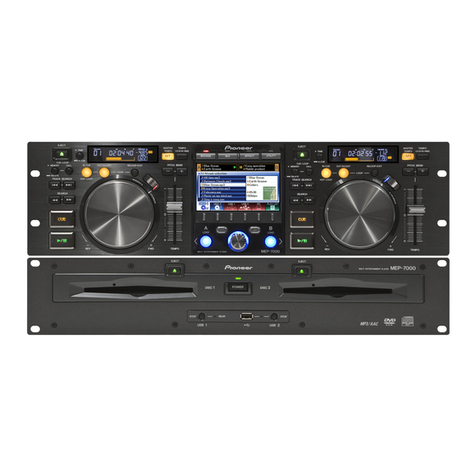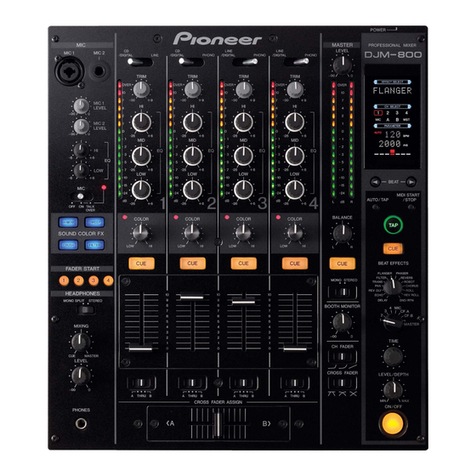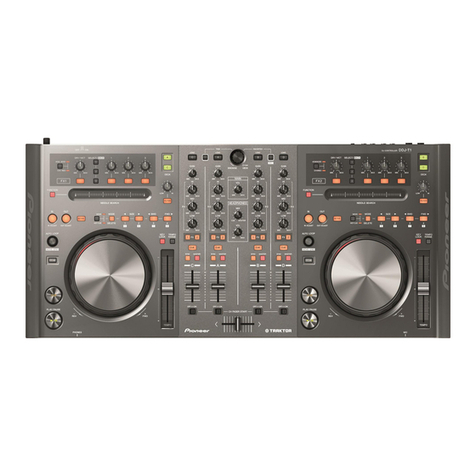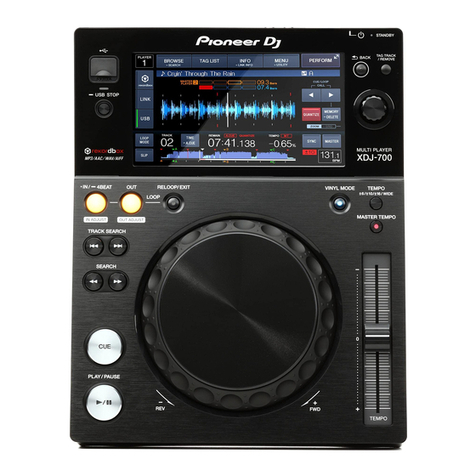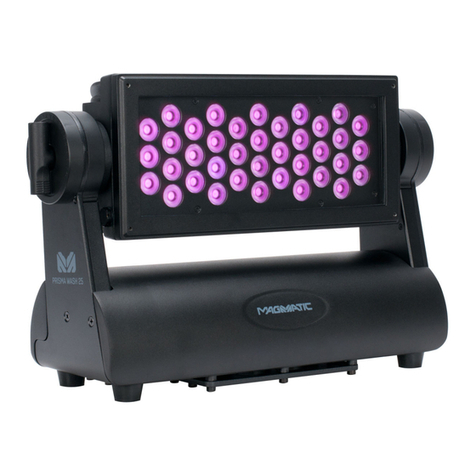6. CIRCUIT DESCRIPTION
Signal Path
1. T'he signals from the microphone terminals
and the phono terminals (of channels 1 and
2 only) are amplified by the two NPN
transistors in the direct coupled NFB-type
amplifier after selection with the input
switches.
2. Both the standard jacks and the DIN type
connectors can be used for the microphone
inputs, but as the standard jacks defeat the
DIN connector, it is not possible to use the
standard jacks when a microphone is con-
nected to the DIN type connector for the
same channel.
If two microphones are plugged into the
same channel at the same time, only the one
plugged into the standard jack can be used.
3. The amplified signals from the microphone
or turntable are next fed to the resistors in
the mixing stage through the slider type level
controls of each channel (except 3 and 4,
which have pan-pots) and the output chan-
nel selector switch.
4. The signals mixed by the resistors in the
mixing stage are then amplified in the direct
coupled amplifier, by the PNP and the NPN
transistors (2 transistors in all).
5. The signal taken from the NPN transistor
emitter (emitter follower) passes through the
MASTER VOLUME potentiometer to be
amplified in another two-transistor direct
coupled amplifier and then sent to the
output terminals from the emitter follower.
INPUT
MA-EiE!
6. The output terminals have both phono jacks
and a DIN type connector. The two pairs
of phono jacks and DIN type connector are
wired in parallel, so they can be used simul-
taneously, if necessary.
7. The headphone output signal (for monitor-
ing purposes) is a portion of the output
which appears at the output terminals, am-
plified by an integrated circuit.
The Microphone and Equalizer Amplifier
Stage
Figure 1 is a simplified circuit diagram of the
microphone/equalizer amplifier for channels 1
and 2. The switching between the equalizer
function and the mike amp function is effected
by the switch marked S.
The microphone input terminal has a sensitivity
of 0.25 mV while the phono input sensitivity is
2.5 mV at lkHz in each case, so altering the
gain by merely switching the CR element of the
closed loop NFB would cause instability, which
would lead to distortion and noise.
Therefore, the amount of the current NFB
from first stage transistor Q1 is changed by Sa,
and the CR element is switched, to determine
the frequency characteristics, by Sb.
OUTPUT
PHONO-MlC PH0NO*MlC Fig. 1
